EDITOR’S CORNER
 The latest Centrediscs release, featuring works by Alexina Louie, Violet Archer and Larysa Kuzmenko, appropriately arrived on International Women’s Day. Pianist Christina Petrowska Quilico is the soloist on 3 Concerti (CMCCD 15610), a disc which serves to remind us that there is a grand tradition of concerto writing in this country and begs the question – why are they so rarely played? According to the Encyclopaedia of Music in Canada, interest in the concertante form began in earnest in 1938 with Ballade for viola and strings by Godfrey Ridout and the following year with Violet Archer’s Concerto for the unusual combination of timpani and orchestra. Piano concertos came to the fore in the 1940s, with 13 premiered between 1944 (Healey Willan) and 1949 (Clermont Pépin’s second). The 1950s saw the focus turn to the violin concerto with particularly successful examples by Alexander Brott, Murray Adaskin and John Weinzweig, but as this disc attests interest in the piano never waned. We are presented with works spanning four decades, from 1956 (Archer) to 1996 (Kuzmenko). Of the three, Louie’s (1984) is the most exotic. Drawing on the composer’s oriental heritage both melodically and in some of the instrumentation in the percussion section, the work is a skilful and exuberant blending of East and West. Petrowska Quilico is in fine form with the National Arts Centre Orchestra under Alex Pauk. Interestingly, considering her first foray into the concerto form, Violet Archer’s Piano Concerto No. 1 opens with a flourish from the timpani before the piano enters in moto perpetuo mode. Recorded in 1981 by the CBC Vancouver Orchestra under John Eliot Gardiner, I am a bit disappointed with the audio quality of this transfer, but have no complaints about the performance. Somewhat reminiscent of Archer’s teacher Bela Bartok in its orchestration, melodically this is a bold and mature work reflective of its time. The final piece is the most recent but also the most old-fashioned. Kuzmenko is an unabashed Romantic whose model seems to be Rachmaninov, although here too I sense the influence of Bartok. The work is flamboyantly virtuosic and Petrowska Quilico takes full advantage of the opportunity to rise to the occasion. Recorded at the Massey Hall New Music Festival in 1996 with Jukka-Pekka Saraste conducting the Toronto Symphony, I am left wondering why this would be programmed as new music. It is a well-crafted, dramatic work that would be well at home on any mainstream orchestral concert and, like the others on this disc, deserves to be heard more often.
The latest Centrediscs release, featuring works by Alexina Louie, Violet Archer and Larysa Kuzmenko, appropriately arrived on International Women’s Day. Pianist Christina Petrowska Quilico is the soloist on 3 Concerti (CMCCD 15610), a disc which serves to remind us that there is a grand tradition of concerto writing in this country and begs the question – why are they so rarely played? According to the Encyclopaedia of Music in Canada, interest in the concertante form began in earnest in 1938 with Ballade for viola and strings by Godfrey Ridout and the following year with Violet Archer’s Concerto for the unusual combination of timpani and orchestra. Piano concertos came to the fore in the 1940s, with 13 premiered between 1944 (Healey Willan) and 1949 (Clermont Pépin’s second). The 1950s saw the focus turn to the violin concerto with particularly successful examples by Alexander Brott, Murray Adaskin and John Weinzweig, but as this disc attests interest in the piano never waned. We are presented with works spanning four decades, from 1956 (Archer) to 1996 (Kuzmenko). Of the three, Louie’s (1984) is the most exotic. Drawing on the composer’s oriental heritage both melodically and in some of the instrumentation in the percussion section, the work is a skilful and exuberant blending of East and West. Petrowska Quilico is in fine form with the National Arts Centre Orchestra under Alex Pauk. Interestingly, considering her first foray into the concerto form, Violet Archer’s Piano Concerto No. 1 opens with a flourish from the timpani before the piano enters in moto perpetuo mode. Recorded in 1981 by the CBC Vancouver Orchestra under John Eliot Gardiner, I am a bit disappointed with the audio quality of this transfer, but have no complaints about the performance. Somewhat reminiscent of Archer’s teacher Bela Bartok in its orchestration, melodically this is a bold and mature work reflective of its time. The final piece is the most recent but also the most old-fashioned. Kuzmenko is an unabashed Romantic whose model seems to be Rachmaninov, although here too I sense the influence of Bartok. The work is flamboyantly virtuosic and Petrowska Quilico takes full advantage of the opportunity to rise to the occasion. Recorded at the Massey Hall New Music Festival in 1996 with Jukka-Pekka Saraste conducting the Toronto Symphony, I am left wondering why this would be programmed as new music. It is a well-crafted, dramatic work that would be well at home on any mainstream orchestral concert and, like the others on this disc, deserves to be heard more often.
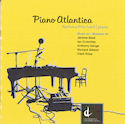 Another Centrediscs release, Piano Atlantica (CMCCD-15210) is a marvellous collection of music by composers from across the country who now make their home in the Atlantic provinces. Pianist Barbara Pritchard, herself a transplant from British Columbia via Toronto, where she was a member of Arraymusic and Continuum and performed with New Music Concerts on several memorable occasions, now lives in Halifax and teaches at Dalhousie. The first notes we hear, in Jerome Blais’ Con Stella, are pounded chords at the extreme reaches of the piano’s keyboard. In his short piece Blais, originally from Montreal, also ventures inside the piano for Aeolian harp-like strumming of the strings, knocking on the inside of the instrument and employing a number of percussive “preparations”. B.C. native Ian Crutchley contributes a set of Variations based on an 11-note pitch series which holds our attention throughout its 20 minute journey. Another West Coast transplant, Anthony Genge’s Four Quiet Preludes offer a welcome respite from the drama of the first two pieces and Pritchard lingers lovingly over the long decays, never rushing to the next note. Maritime-born Richard Gibson is well represented on this disc, with a selection from his 25 Preludes - highlights include Hommage à Erik and Ricercare à 3 – and Variation, a short work in which the composer limits himself to a two octave range corresponding to the compass of a toy piano. A founding member of Toronto’s Continuum collective, Venezuelan-born Clark Ross is now the artistic director of the Newfound Music Festival in St. John’s. Ross’ at times rollicking and at times contemplative Last Dance brings this fine disc to a close. Recorded at the St. Mary’s University Art Gallery in Halifax, both pianist and piano sound exceptional.
Another Centrediscs release, Piano Atlantica (CMCCD-15210) is a marvellous collection of music by composers from across the country who now make their home in the Atlantic provinces. Pianist Barbara Pritchard, herself a transplant from British Columbia via Toronto, where she was a member of Arraymusic and Continuum and performed with New Music Concerts on several memorable occasions, now lives in Halifax and teaches at Dalhousie. The first notes we hear, in Jerome Blais’ Con Stella, are pounded chords at the extreme reaches of the piano’s keyboard. In his short piece Blais, originally from Montreal, also ventures inside the piano for Aeolian harp-like strumming of the strings, knocking on the inside of the instrument and employing a number of percussive “preparations”. B.C. native Ian Crutchley contributes a set of Variations based on an 11-note pitch series which holds our attention throughout its 20 minute journey. Another West Coast transplant, Anthony Genge’s Four Quiet Preludes offer a welcome respite from the drama of the first two pieces and Pritchard lingers lovingly over the long decays, never rushing to the next note. Maritime-born Richard Gibson is well represented on this disc, with a selection from his 25 Preludes - highlights include Hommage à Erik and Ricercare à 3 – and Variation, a short work in which the composer limits himself to a two octave range corresponding to the compass of a toy piano. A founding member of Toronto’s Continuum collective, Venezuelan-born Clark Ross is now the artistic director of the Newfound Music Festival in St. John’s. Ross’ at times rollicking and at times contemplative Last Dance brings this fine disc to a close. Recorded at the St. Mary’s University Art Gallery in Halifax, both pianist and piano sound exceptional.
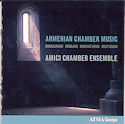 Armenian Chamber Music is the 10th release from Toronto’s Amici Chamber Ensemble and their first for the ATMA label (ACD2 2609). Pianist Serouj Kradjian, who recently replaced founding member Patricia Parr, brings a wealth of repertoire from his homeland as well as his own compositional skills to the mix. The other core members, clarinettist Joaquin Valdepeñas and cellist David Hetherington, are joined by violinist Benjamin Bowman in various combinations for works by Arno Babadjanian, Aram Khachaturian and Alexander Arutiunian. An unexpected treat upon listening without first checking the liner notes, was the warm and compelling voice of Isabel Bayrakdarian in Oror, a lullaby for soprano, clarinet and four cellos by Parsegh Ganatchian. Guests for this track are Hetherington’s TSO colleagues Winona Zelenka, Roberta Janzen and freelancer Amy Laing. Following Kradjian’s haunting and dramatic Elegy for Restive Souls the lullaby has a magical quality that leaves us regretting its brief duration. Khachaturian’s Trio for clarinet, violin and piano with it unusual Andante con dolore opening movement leads gently out of the lullaby, but is lively, playful and lyrical in the movements that follow. Arutiunian's 1992 Suite for the same forces provides a rambunctious finale for Amici's new disc.
Armenian Chamber Music is the 10th release from Toronto’s Amici Chamber Ensemble and their first for the ATMA label (ACD2 2609). Pianist Serouj Kradjian, who recently replaced founding member Patricia Parr, brings a wealth of repertoire from his homeland as well as his own compositional skills to the mix. The other core members, clarinettist Joaquin Valdepeñas and cellist David Hetherington, are joined by violinist Benjamin Bowman in various combinations for works by Arno Babadjanian, Aram Khachaturian and Alexander Arutiunian. An unexpected treat upon listening without first checking the liner notes, was the warm and compelling voice of Isabel Bayrakdarian in Oror, a lullaby for soprano, clarinet and four cellos by Parsegh Ganatchian. Guests for this track are Hetherington’s TSO colleagues Winona Zelenka, Roberta Janzen and freelancer Amy Laing. Following Kradjian’s haunting and dramatic Elegy for Restive Souls the lullaby has a magical quality that leaves us regretting its brief duration. Khachaturian’s Trio for clarinet, violin and piano with it unusual Andante con dolore opening movement leads gently out of the lullaby, but is lively, playful and lyrical in the movements that follow. Arutiunian's 1992 Suite for the same forces provides a rambunctious finale for Amici's new disc.
 Angèle Dubeau & La Pietà’s latest, Arvo Pärt: Portrait (Analekta AN 2 8731), is a strong collection of the Estonian master’s works. A leading proponent of so-called Mystic or Holy Minimalism (not the composer’s terms), Pärt employs a self-made lush but austere compositional style called tintinnabuli. Several of his best known works are here, including Cantus In Memoriam Benjamin Britten for string orchestra and bell, Tabula Rasa for 2 violins, string orchestra and prepared piano and Spiegel im Spiegel for violin and piano. Pärt is particularly noted for his choral writing, represented here by Wallfartslied (Pilgrim’s Song) for male choir and strings. First championed by Gidon Kremer, it is perhaps appropriate that Quebec’s own superstar violinist Angèle Dubeau should be bringing Pärt’s music to a new audience. If you are not already familiar, this would make a great introduction to his work.
Angèle Dubeau & La Pietà’s latest, Arvo Pärt: Portrait (Analekta AN 2 8731), is a strong collection of the Estonian master’s works. A leading proponent of so-called Mystic or Holy Minimalism (not the composer’s terms), Pärt employs a self-made lush but austere compositional style called tintinnabuli. Several of his best known works are here, including Cantus In Memoriam Benjamin Britten for string orchestra and bell, Tabula Rasa for 2 violins, string orchestra and prepared piano and Spiegel im Spiegel for violin and piano. Pärt is particularly noted for his choral writing, represented here by Wallfartslied (Pilgrim’s Song) for male choir and strings. First championed by Gidon Kremer, it is perhaps appropriate that Quebec’s own superstar violinist Angèle Dubeau should be bringing Pärt’s music to a new audience. If you are not already familiar, this would make a great introduction to his work.
We welcome your feedback and invite submissions. CDs and comments should be sent to: The WholeNote, 503 – 720 Bathurst St. Toronto ON M5S 2R4.
David Olds
DISCoveries Editor
discoveries@thewholenote.com
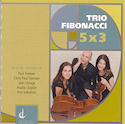 5 X 3
5 X 3 

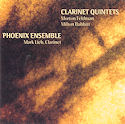 Feldman; Babbitt - Clarinet Quintets
Feldman; Babbitt - Clarinet Quintets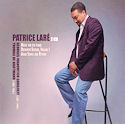 Gurdjieff/Hartmann - Music for Piano Definitive Edition, Vol. 1 - Asian Songs and Rythms
Gurdjieff/Hartmann - Music for Piano Definitive Edition, Vol. 1 - Asian Songs and Rythms Although resident in Quebec since 1993, Paris-born Patrice Lare studied in Moscow for 8 years, and is steeped in the Russian piano school tradition. His playing provides a massive foundation for the Complete Rachmaninov Piano Trios (XXI-CD 2 1700) with his wife, cellist Velitchka Yotcheva (also Moscow-trained), and Canadian violinist Jean-Sebastien Roy. Rachmaninov’s Trios Elegiaques are both early works in his Romantic, post-Tchaikovsky mold. No.1 is a single-movement trio in G minor from 1892, and No.2 a three-movement work in D minor, written after the death of Tchaikovsky in late 1893 and dedicated “To the Memory of a Great Artist”. This is big but always sensitive playing, perfectly attuned to the style and nature of the music. Recorded at the Radio-Canada studios in Montreal, the sound quality matches the tremendous performances.
Although resident in Quebec since 1993, Paris-born Patrice Lare studied in Moscow for 8 years, and is steeped in the Russian piano school tradition. His playing provides a massive foundation for the Complete Rachmaninov Piano Trios (XXI-CD 2 1700) with his wife, cellist Velitchka Yotcheva (also Moscow-trained), and Canadian violinist Jean-Sebastien Roy. Rachmaninov’s Trios Elegiaques are both early works in his Romantic, post-Tchaikovsky mold. No.1 is a single-movement trio in G minor from 1892, and No.2 a three-movement work in D minor, written after the death of Tchaikovsky in late 1893 and dedicated “To the Memory of a Great Artist”. This is big but always sensitive playing, perfectly attuned to the style and nature of the music. Recorded at the Radio-Canada studios in Montreal, the sound quality matches the tremendous performances.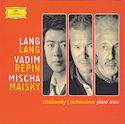 I’ve sometimes wondered if the technical heights reached by Lang Lang are always matched by the depths of his interpretations, but he certainly does his artistic reputation no harm with his first chamber music CD, Tchaikovsky and Rachmaninov Piano Trios with Vadim Repin and Mischa Maisky. Presumably this is his final major release from Deutsche Grammophon (477 8099), following his $3 million signing with Sony; if so, it’s a fascinating farewell, suggesting chamber music as a new field with huge potential for him. The Rachmaninov trio is the G minor, and both here and in the Tchaikovsky A minor trio Lang Lang really seems to avoid “showy” playing, getting to the heart of the music and clearly sharing the interpretative view of his Russian colleagues. Again, the standard of the recording matches that of the two outstanding performances.
I’ve sometimes wondered if the technical heights reached by Lang Lang are always matched by the depths of his interpretations, but he certainly does his artistic reputation no harm with his first chamber music CD, Tchaikovsky and Rachmaninov Piano Trios with Vadim Repin and Mischa Maisky. Presumably this is his final major release from Deutsche Grammophon (477 8099), following his $3 million signing with Sony; if so, it’s a fascinating farewell, suggesting chamber music as a new field with huge potential for him. The Rachmaninov trio is the G minor, and both here and in the Tchaikovsky A minor trio Lang Lang really seems to avoid “showy” playing, getting to the heart of the music and clearly sharing the interpretative view of his Russian colleagues. Again, the standard of the recording matches that of the two outstanding performances.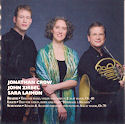 At first sight, there doesn’t seem to be any connection between the works on the latest CD from faculty members at McGill University’s Schulich School of Music (XXI-CD 2 1699), but they are in fact closely related. Jonathan Crow (violin), John Zirbel (horn) and Sara Laimon (piano) open with a beautifully warm reading of the Brahms E flat Horn Trio. This was the first work written for this instrumental combination, and was inspired by the death of the composer’s mother. Brahms chose to use not the newly-developed valve horn but the natural waldhorn, with its sentimental ties to his family and his youth in Hamburg. It was, in turn, a request from a Hamburg pianist for a horn trio to be played along with the Brahms that led György Ligeti to write his own Horn Trio in 1982; moreover, Ligeti had also lost his own mother earlier that year. Sub-titled “Hommage à Brahms”, it is a demanding, complex and multi-layered work in the same four-movement form. Again, the performance is exemplary. Brahms’ mentor Schumann wrote his Adagio & Allegro for horn and piano in 3 days in February 1849; the first substantial solo work to fully explore the potential of the new valve horn, it is still a demanding piece, and Zirbel and Laimon are terrific. Recorded at the acoustically-excellent Schulich School, the sound quality is outstanding.
At first sight, there doesn’t seem to be any connection between the works on the latest CD from faculty members at McGill University’s Schulich School of Music (XXI-CD 2 1699), but they are in fact closely related. Jonathan Crow (violin), John Zirbel (horn) and Sara Laimon (piano) open with a beautifully warm reading of the Brahms E flat Horn Trio. This was the first work written for this instrumental combination, and was inspired by the death of the composer’s mother. Brahms chose to use not the newly-developed valve horn but the natural waldhorn, with its sentimental ties to his family and his youth in Hamburg. It was, in turn, a request from a Hamburg pianist for a horn trio to be played along with the Brahms that led György Ligeti to write his own Horn Trio in 1982; moreover, Ligeti had also lost his own mother earlier that year. Sub-titled “Hommage à Brahms”, it is a demanding, complex and multi-layered work in the same four-movement form. Again, the performance is exemplary. Brahms’ mentor Schumann wrote his Adagio & Allegro for horn and piano in 3 days in February 1849; the first substantial solo work to fully explore the potential of the new valve horn, it is still a demanding piece, and Zirbel and Laimon are terrific. Recorded at the acoustically-excellent Schulich School, the sound quality is outstanding. Stravinsky - Pulcinella; Symphony in Three Movements
Stravinsky - Pulcinella; Symphony in Three Movements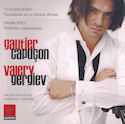 Tchaikovsky - Rococo Variations; Prokofiev - Sinfonia Concertante
Tchaikovsky - Rococo Variations; Prokofiev - Sinfonia Concertante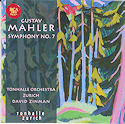 Mahler - Symphony No.7
Mahler - Symphony No.7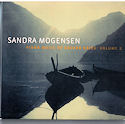 Piano Music of Edward Grieg, Volume 2
Piano Music of Edward Grieg, Volume 2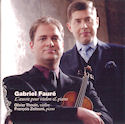 Fauré - Works for Violin and Piano
Fauré - Works for Violin and Piano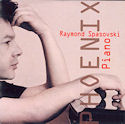 Phoenix
Phoenix 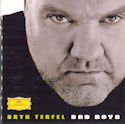 Bad Boys
Bad Boys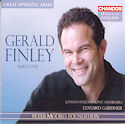 Great Operatic Arias
Great Operatic Arias Wagner - Gotterdammerung
Wagner - Gotterdammerung Haydn - Orlando Paladino
Haydn - Orlando Paladino The latest Centrediscs release, featuring works by Alexina Louie, Violet Archer and Larysa Kuzmenko, appropriately arrived on International Women’s Day. Pianist Christina Petrowska Quilico is the soloist on 3 Concerti (CMCCD 15610), a disc which serves to remind us that there is a grand tradition of concerto writing in this country and begs the question – why are they so rarely played? According to the Encyclopaedia of Music in Canada, interest in the concertante form began in earnest in 1938 with Ballade for viola and strings by Godfrey Ridout and the following year with Violet Archer’s Concerto for the unusual combination of timpani and orchestra. Piano concertos came to the fore in the 1940s, with 13 premiered between 1944 (Healey Willan) and 1949 (Clermont Pépin’s second). The 1950s saw the focus turn to the violin concerto with particularly successful examples by Alexander Brott, Murray Adaskin and John Weinzweig, but as this disc attests interest in the piano never waned. We are presented with works spanning four decades, from 1956 (Archer) to 1996 (Kuzmenko). Of the three, Louie’s (1984) is the most exotic. Drawing on the composer’s oriental heritage both melodically and in some of the instrumentation in the percussion section, the work is a skilful and exuberant blending of East and West. Petrowska Quilico is in fine form with the National Arts Centre Orchestra under Alex Pauk. Interestingly, considering her first foray into the concerto form, Violet Archer’s Piano Concerto No. 1 opens with a flourish from the timpani before the piano enters in moto perpetuo mode. Recorded in 1981 by the CBC Vancouver Orchestra under John Eliot Gardiner, I am a bit disappointed with the audio quality of this transfer, but have no complaints about the performance. Somewhat reminiscent of Archer’s teacher Bela Bartok in its orchestration, melodically this is a bold and mature work reflective of its time. The final piece is the most recent but also the most old-fashioned. Kuzmenko is an unabashed Romantic whose model seems to be Rachmaninov, although here too I sense the influence of Bartok. The work is flamboyantly virtuosic and Petrowska Quilico takes full advantage of the opportunity to rise to the occasion. Recorded at the Massey Hall New Music Festival in 1996 with Jukka-Pekka Saraste conducting the Toronto Symphony, I am left wondering why this would be programmed as new music. It is a well-crafted, dramatic work that would be well at home on any mainstream orchestral concert and, like the others on this disc, deserves to be heard more often.
The latest Centrediscs release, featuring works by Alexina Louie, Violet Archer and Larysa Kuzmenko, appropriately arrived on International Women’s Day. Pianist Christina Petrowska Quilico is the soloist on 3 Concerti (CMCCD 15610), a disc which serves to remind us that there is a grand tradition of concerto writing in this country and begs the question – why are they so rarely played? According to the Encyclopaedia of Music in Canada, interest in the concertante form began in earnest in 1938 with Ballade for viola and strings by Godfrey Ridout and the following year with Violet Archer’s Concerto for the unusual combination of timpani and orchestra. Piano concertos came to the fore in the 1940s, with 13 premiered between 1944 (Healey Willan) and 1949 (Clermont Pépin’s second). The 1950s saw the focus turn to the violin concerto with particularly successful examples by Alexander Brott, Murray Adaskin and John Weinzweig, but as this disc attests interest in the piano never waned. We are presented with works spanning four decades, from 1956 (Archer) to 1996 (Kuzmenko). Of the three, Louie’s (1984) is the most exotic. Drawing on the composer’s oriental heritage both melodically and in some of the instrumentation in the percussion section, the work is a skilful and exuberant blending of East and West. Petrowska Quilico is in fine form with the National Arts Centre Orchestra under Alex Pauk. Interestingly, considering her first foray into the concerto form, Violet Archer’s Piano Concerto No. 1 opens with a flourish from the timpani before the piano enters in moto perpetuo mode. Recorded in 1981 by the CBC Vancouver Orchestra under John Eliot Gardiner, I am a bit disappointed with the audio quality of this transfer, but have no complaints about the performance. Somewhat reminiscent of Archer’s teacher Bela Bartok in its orchestration, melodically this is a bold and mature work reflective of its time. The final piece is the most recent but also the most old-fashioned. Kuzmenko is an unabashed Romantic whose model seems to be Rachmaninov, although here too I sense the influence of Bartok. The work is flamboyantly virtuosic and Petrowska Quilico takes full advantage of the opportunity to rise to the occasion. Recorded at the Massey Hall New Music Festival in 1996 with Jukka-Pekka Saraste conducting the Toronto Symphony, I am left wondering why this would be programmed as new music. It is a well-crafted, dramatic work that would be well at home on any mainstream orchestral concert and, like the others on this disc, deserves to be heard more often. Another Centrediscs release, Piano Atlantica (CMCCD-15210) is a marvellous collection of music by composers from across the country who now make their home in the Atlantic provinces. Pianist Barbara Pritchard, herself a transplant from British Columbia via Toronto, where she was a member of Arraymusic and Continuum and performed with New Music Concerts on several memorable occasions, now lives in Halifax and teaches at Dalhousie. The first notes we hear, in Jerome Blais’ Con Stella, are pounded chords at the extreme reaches of the piano’s keyboard. In his short piece Blais, originally from Montreal, also ventures inside the piano for Aeolian harp-like strumming of the strings, knocking on the inside of the instrument and employing a number of percussive “preparations”. B.C. native Ian Crutchley contributes a set of Variations based on an 11-note pitch series which holds our attention throughout its 20 minute journey. Another West Coast transplant, Anthony Genge’s Four Quiet Preludes offer a welcome respite from the drama of the first two pieces and Pritchard lingers lovingly over the long decays, never rushing to the next note. Maritime-born Richard Gibson is well represented on this disc, with a selection from his 25 Preludes - highlights include Hommage à Erik and Ricercare à 3 – and Variation, a short work in which the composer limits himself to a two octave range corresponding to the compass of a toy piano. A founding member of Toronto’s Continuum collective, Venezuelan-born Clark Ross is now the artistic director of the Newfound Music Festival in St. John’s. Ross’ at times rollicking and at times contemplative Last Dance brings this fine disc to a close. Recorded at the St. Mary’s University Art Gallery in Halifax, both pianist and piano sound exceptional.
Another Centrediscs release, Piano Atlantica (CMCCD-15210) is a marvellous collection of music by composers from across the country who now make their home in the Atlantic provinces. Pianist Barbara Pritchard, herself a transplant from British Columbia via Toronto, where she was a member of Arraymusic and Continuum and performed with New Music Concerts on several memorable occasions, now lives in Halifax and teaches at Dalhousie. The first notes we hear, in Jerome Blais’ Con Stella, are pounded chords at the extreme reaches of the piano’s keyboard. In his short piece Blais, originally from Montreal, also ventures inside the piano for Aeolian harp-like strumming of the strings, knocking on the inside of the instrument and employing a number of percussive “preparations”. B.C. native Ian Crutchley contributes a set of Variations based on an 11-note pitch series which holds our attention throughout its 20 minute journey. Another West Coast transplant, Anthony Genge’s Four Quiet Preludes offer a welcome respite from the drama of the first two pieces and Pritchard lingers lovingly over the long decays, never rushing to the next note. Maritime-born Richard Gibson is well represented on this disc, with a selection from his 25 Preludes - highlights include Hommage à Erik and Ricercare à 3 – and Variation, a short work in which the composer limits himself to a two octave range corresponding to the compass of a toy piano. A founding member of Toronto’s Continuum collective, Venezuelan-born Clark Ross is now the artistic director of the Newfound Music Festival in St. John’s. Ross’ at times rollicking and at times contemplative Last Dance brings this fine disc to a close. Recorded at the St. Mary’s University Art Gallery in Halifax, both pianist and piano sound exceptional. Armenian Chamber Music is the 10th release from Toronto’s Amici Chamber Ensemble and their first for the ATMA label (ACD2 2609). Pianist Serouj Kradjian, who recently replaced founding member Patricia Parr, brings a wealth of repertoire from his homeland as well as his own compositional skills to the mix. The other core members, clarinettist Joaquin Valdepeñas and cellist David Hetherington, are joined by violinist Benjamin Bowman in various combinations for works by Arno Babadjanian, Aram Khachaturian and Alexander Arutiunian. An unexpected treat upon listening without first checking the liner notes, was the warm and compelling voice of Isabel Bayrakdarian in Oror, a lullaby for soprano, clarinet and four cellos by Parsegh Ganatchian. Guests for this track are Hetherington’s TSO colleagues Winona Zelenka, Roberta Janzen and freelancer Amy Laing. Following Kradjian’s haunting and dramatic Elegy for Restive Souls the lullaby has a magical quality that leaves us regretting its brief duration. Khachaturian’s Trio for clarinet, violin and piano with it unusual Andante con dolore opening movement leads gently out of the lullaby, but is lively, playful and lyrical in the movements that follow. Arutiunian's 1992 Suite for the same forces provides a rambunctious finale for Amici's new disc.
Armenian Chamber Music is the 10th release from Toronto’s Amici Chamber Ensemble and their first for the ATMA label (ACD2 2609). Pianist Serouj Kradjian, who recently replaced founding member Patricia Parr, brings a wealth of repertoire from his homeland as well as his own compositional skills to the mix. The other core members, clarinettist Joaquin Valdepeñas and cellist David Hetherington, are joined by violinist Benjamin Bowman in various combinations for works by Arno Babadjanian, Aram Khachaturian and Alexander Arutiunian. An unexpected treat upon listening without first checking the liner notes, was the warm and compelling voice of Isabel Bayrakdarian in Oror, a lullaby for soprano, clarinet and four cellos by Parsegh Ganatchian. Guests for this track are Hetherington’s TSO colleagues Winona Zelenka, Roberta Janzen and freelancer Amy Laing. Following Kradjian’s haunting and dramatic Elegy for Restive Souls the lullaby has a magical quality that leaves us regretting its brief duration. Khachaturian’s Trio for clarinet, violin and piano with it unusual Andante con dolore opening movement leads gently out of the lullaby, but is lively, playful and lyrical in the movements that follow. Arutiunian's 1992 Suite for the same forces provides a rambunctious finale for Amici's new disc. Angèle Dubeau & La Pietà’s latest, Arvo Pärt: Portrait (Analekta AN 2 8731), is a strong collection of the Estonian master’s works. A leading proponent of so-called Mystic or Holy Minimalism (not the composer’s terms), Pärt employs a self-made lush but austere compositional style called tintinnabuli. Several of his best known works are here, including Cantus In Memoriam Benjamin Britten for string orchestra and bell, Tabula Rasa for 2 violins, string orchestra and prepared piano and Spiegel im Spiegel for violin and piano. Pärt is particularly noted for his choral writing, represented here by Wallfartslied (Pilgrim’s Song) for male choir and strings. First championed by Gidon Kremer, it is perhaps appropriate that Quebec’s own superstar violinist Angèle Dubeau should be bringing Pärt’s music to a new audience. If you are not already familiar, this would make a great introduction to his work.
Angèle Dubeau & La Pietà’s latest, Arvo Pärt: Portrait (Analekta AN 2 8731), is a strong collection of the Estonian master’s works. A leading proponent of so-called Mystic or Holy Minimalism (not the composer’s terms), Pärt employs a self-made lush but austere compositional style called tintinnabuli. Several of his best known works are here, including Cantus In Memoriam Benjamin Britten for string orchestra and bell, Tabula Rasa for 2 violins, string orchestra and prepared piano and Spiegel im Spiegel for violin and piano. Pärt is particularly noted for his choral writing, represented here by Wallfartslied (Pilgrim’s Song) for male choir and strings. First championed by Gidon Kremer, it is perhaps appropriate that Quebec’s own superstar violinist Angèle Dubeau should be bringing Pärt’s music to a new audience. If you are not already familiar, this would make a great introduction to his work./Brunhilda-area-92x138.jpg)
